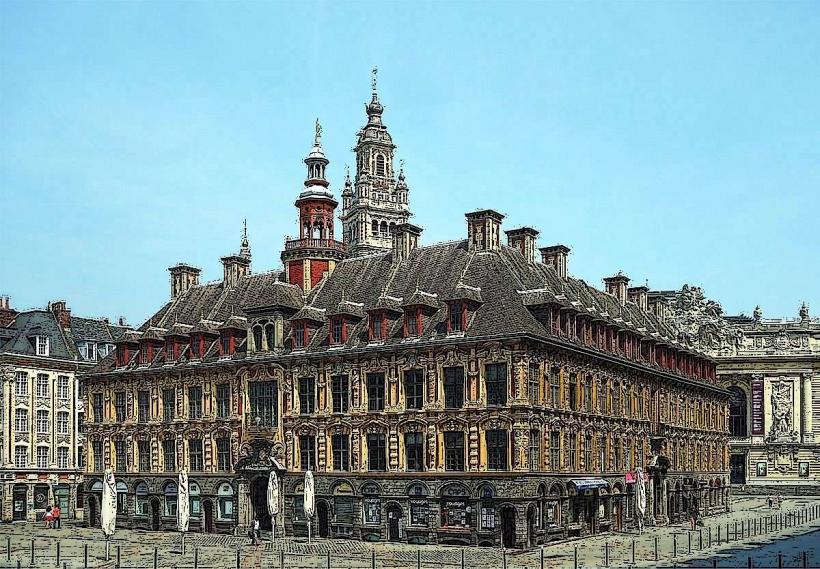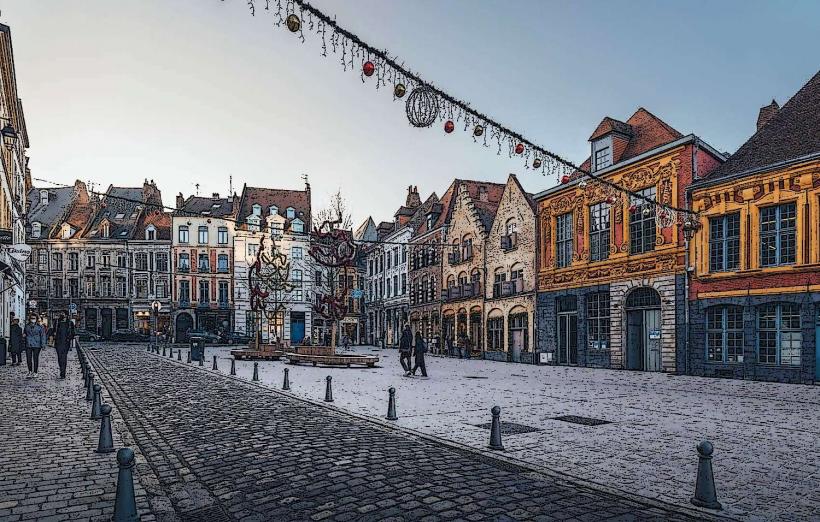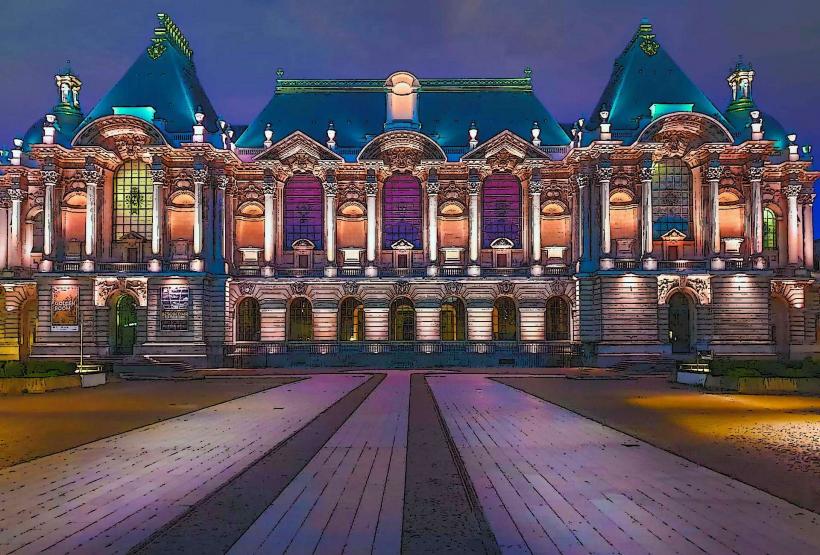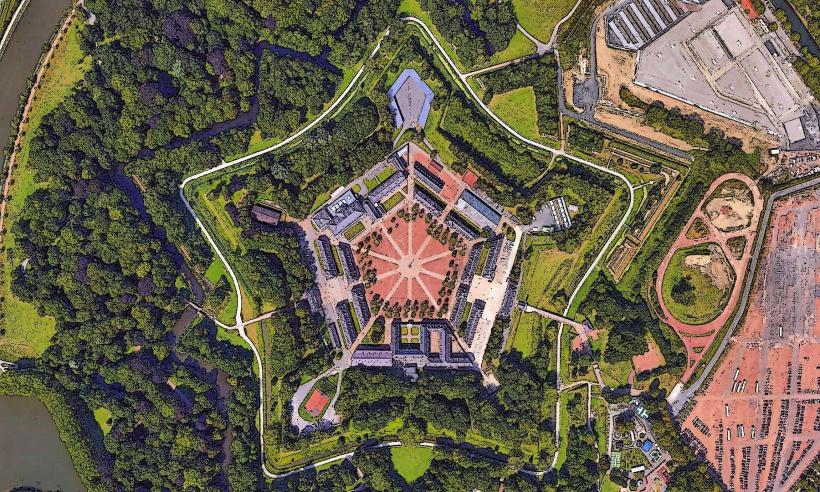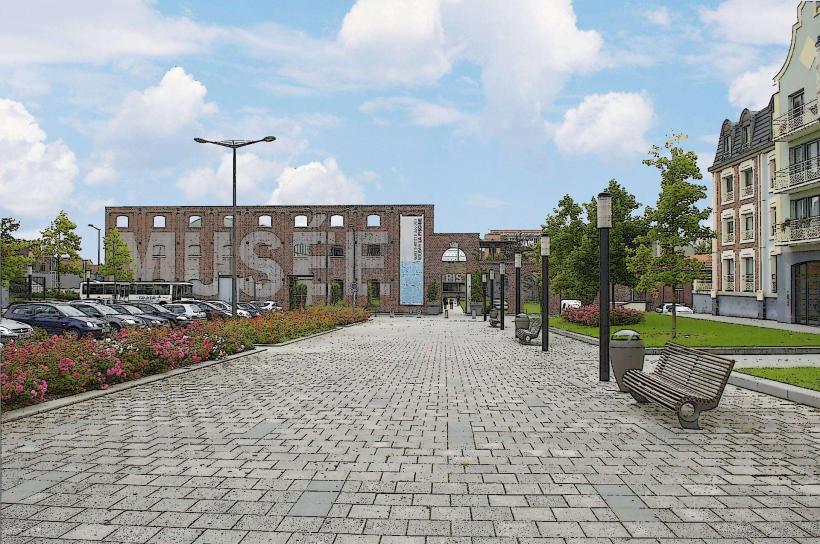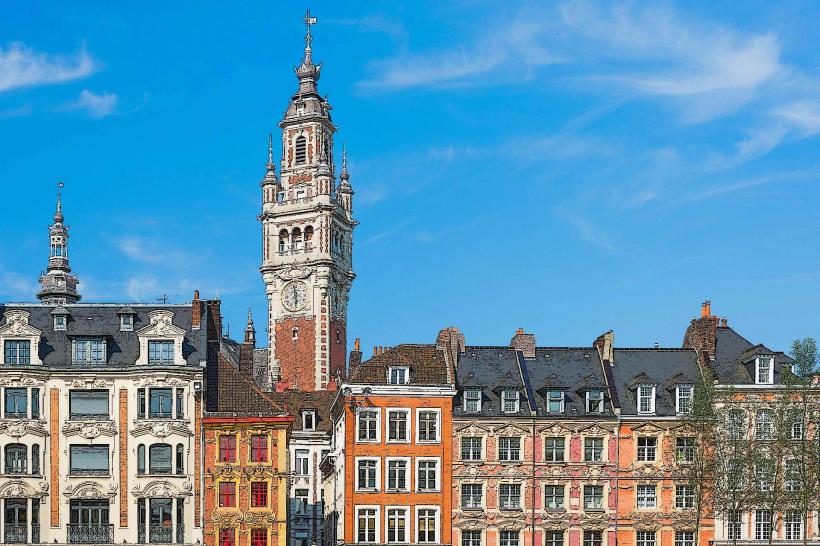Information
City: LilleCountry: France
Continent: Europe
Lille is a vibrant city located in the Hauts-de-France region of northern France, near the border with Belgium. Known for its rich history, stunning architecture, and dynamic cultural scene, Lille has grown into a cosmopolitan city while maintaining its historical charm. It is the capital of the Nord department and has become one of the most important cultural and economic centers in northern France.
1. History of Lille
Lille's history spans over a thousand years, marked by its strategic position and changing rulers. The city's development can be divided into several key phases:
Early and Medieval Period: The city of Lille was founded around the 10th century, initially a small fortress on an island in the Deûle River. By the 12th century, Lille was part of the County of Flanders. During the medieval period, it flourished as a key trading hub.
Spanish and French Rule: In the 17th century, Lille became part of the Spanish Netherlands. However, in 1667, it was taken by Louis XIV of France and became a vital military and commercial city in the Kingdom of France. The city’s fortifications were strengthened, making it a key site in France’s defense network.
Industrial Revolution: In the 19th century, Lille’s economy shifted from agriculture to textiles and industry. The city's industrial growth contributed to its expansion and population growth, solidifying its importance as an industrial center.
Modern Era: After World War II, Lille underwent significant urban redevelopment, transforming into a modern city with a focus on cultural and economic growth. It is now known for its architecture, education, and art.
2. Key Landmarks and Attractions
Lille boasts a rich array of architectural and historical landmarks, making it a fascinating city to explore.
Grand Place (Place du Général de Gaulle): The Grand Place is the central square of Lille, surrounded by magnificent buildings with Flemish Baroque architecture. It is the heart of the city, with cafés, shops, and historical landmarks. Key buildings around the square include the Old Stock Exchange (Vieille Bourse) and the Grand Garde.
Vieille Bourse (Old Stock Exchange): Located in the Grand Place, the Vieille Bourse is a magnificent 17th-century building that was once the stock exchange. It is renowned for its Flemish Renaissance architecture. Inside, visitors can find a book market and courtyards with beautiful fountains. The building is one of the most iconic structures in Lille.
Lille City Hall and Belfry (Hôtel de Ville): The Lille City Hall is an architectural masterpiece, combining Renaissance, Gothic, and Flemish styles. The building houses the mayor’s office and is known for its towering belfry, which stands at nearly 104 meters (341 feet). The belfry is a UNESCO World Heritage site and offers stunning views of the city from its top.
Palais des Beaux-Arts (Palace of Fine Arts): The Palais des Beaux-Arts is one of the largest art museums in France, with a vast collection of paintings, sculptures, and antiques. It houses works by some of the most famous artists in history, including Rubens, Delacroix, Goya, and Manet. The museum is housed in an imposing neoclassical building and is a must-see for art lovers.
Lille Cathedral (Basilique Notre-Dame-de-la-Treille): The Notre-Dame-de-la-Treille Basilica is a modern neo-gothic cathedral that combines traditional Gothic elements with contemporary design. It was completed in the 20th century and is known for its striking facade, which is partially made of translucent stone, allowing natural light to filter through.
Le Palais Rihour: Built in the 15th century, the Palais Rihour is a former royal palace and one of the most significant historical buildings in the city. It was the residence of the Duke of Burgundy’s emissaries. Today, it houses the Tourist Office and is an important symbol of Lille’s past.
Citadel of Lille: The Citadel of Lille is a historic military fortress built by Vauban in the 17th century. This fortress played a crucial role in protecting the city and its inhabitants. While the citadel itself is not open to the public, its surrounding park and green spaces are perfect for a leisurely walk or picnic.
La Piscine Museum (Museum of Art and Industry): The La Piscine Museum is housed in a former art deco swimming pool and is one of the most unique museums in France. It features an impressive collection of art, sculpture, and textiles, along with rotating exhibitions.
Parc Barbieux (Barbieux Park): A beautiful public park in the northeast of the city, Parc Barbieux is a serene place with lakes, flower gardens, and tree-lined paths. The park is ideal for a peaceful stroll and offers a quiet retreat from the urban hustle.
Wazemmes Market: Wazemmes Market is one of the most lively and colorful markets in Lille. It is located in the Wazemmes district and is famous for its vibrant atmosphere. The market offers a wide range of goods, from fresh produce and flowers to unique local products.
La Vieille Ville (Old Town): The Old Town of Lille is a charming area full of narrow streets, traditional houses, and quaint boutiques. Visitors can wander around, exploring small shops, bars, and restaurants offering authentic local cuisine. The area also features beautiful art nouveau and Flemish-style buildings.
3. Festivals and Cultural Events
Lille is known for its rich cultural life, offering a variety of festivals and events throughout the year.
Lille 3000: Lille’s signature cultural event, Lille 3000, is an international arts festival that takes place every three years. The festival celebrates contemporary art, design, and culture, with exhibitions, performances, and installations throughout the city.
Lille International Fair (Foire de Lille): The Lille International Fair is one of the largest fairs in northern France, offering everything from food and fashion to technology and crafts. It attracts thousands of visitors every year.
Braderie de Lille: One of the largest flea markets in Europe, the Braderie de Lille takes place in early September. It is a huge street market where locals and tourists alike can buy antiques, clothes, books, and various other items. The event also features food stalls serving local specialties like moules-frites (mussels and fries).
Lille’s Christmas Market (Marché de Noël): During the Christmas season, Lille transforms into a winter wonderland. The Christmas market in Grand Place offers a festive atmosphere, with holiday lights, traditional food, and handcrafted gifts.
4. Cuisine and Local Food
Lille is known for its hearty northern French cuisine, with influences from both France and Belgium. Some local specialties include:
- Moules-Frites: A dish of mussels served with crispy fries. It’s a classic and beloved meal in the region.
- Carbonnade Flamande: A traditional Flemish beef stew made with beer and served with potatoes or fries.
- Welsh: A local variation of the Welsh rarebit, made with beer, cheese, and bread.
- Maroilles Cheese: A strong-smelling cheese from the region, often served with bread or in various dishes.
5. Transportation
Lille is well connected, making it easy to explore the city and the surrounding region.
- By Train: Lille is well-connected by the TGV (high-speed train), with direct services to Paris, Brussels, and London. The Lille-Europe station and Lille-Flandres station are key train hubs.
- By Air: Lille-Lesquin Airport is located just outside the city, with flights to Europe and beyond.
- By Car: The city is easily accessible via major roads and highways, including the A1 motorway, which connects to Paris.
6. Conclusion
Lille is a dynamic and culturally rich city that blends French and Flemish influences, offering visitors a unique experience in northern France. Whether you’re exploring the stunning medieval architecture, indulging in local cuisine, or enjoying the many cultural events, Lille is a must-visit destination for anyone traveling to the region.

